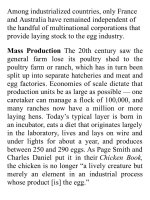On food and cooking the science and lore of the kitchen ( PDFDrive ) 1395
Bạn đang xem bản rút gọn của tài liệu. Xem và tải ngay bản đầy đủ của tài liệu tại đây (212.1 KB, 2 trang )
much of Europe. Monasteries brewed it for
themselvesandfornearbysettlements.Bythe
9th century, alehouses had become common
in England, with individual keepers brewing
theirown.Until1200,theEnglishgovernment
consideredaletobeafood,anddidnottaxit.
ItwasinmedievalGermanythattwogreat
innovationsmadebeerlargelywhatitis
today:brewerspreservedandflavoreditwith
hops,andbegantofermentitslowlyinthe
coldtomakemild-flavoredlager.
Hops The earliest brewers probably added
herbsandspicestobeer,bothtogiveitflavor
and to delay the development of off-flavors
from oxidation and the growth of spoilage
microbes.InearlyEuropethismixture,called
gruit in German, included bog-myrtle,
rosemary, yarrow, and other herbs. Coriander
was also sometimes used, juniper in Norway,
and sweet gale (Myrica gale) especially in
DenmarkandScandinavia.Itwasaround900
that hops, the resinous cones of the vine
Humulus lupulus, a relative of marijuana,
came into use in Bavaria. Thanks to its
pleasant taste and effectiveness in delaying
spoilage, it had largely replacedgruit and
otherherbsbytheendofthe14thcentury.In
1574, Reginald Scot noted inA Perfite
Platforme of a Hoppe Garden that the
advantages of hops were overwhelming: “If
your ale may endure a fortnight, your beer
throughthebenefitofthehops,shallcontinue
a month, and what grace it yieldeth to the
taste, all men may judge that have sense in
their mouths.” Still, it was not until about
1700thatEnglishalewashoppedasamatter
ofcourse.
FoodWords:Malt
Our ancestors probably began soaking and
sprouting grains because it was an easy
waytomakethemsoftenoughtoeatasis,
and quicker to cook. In fact our word for









